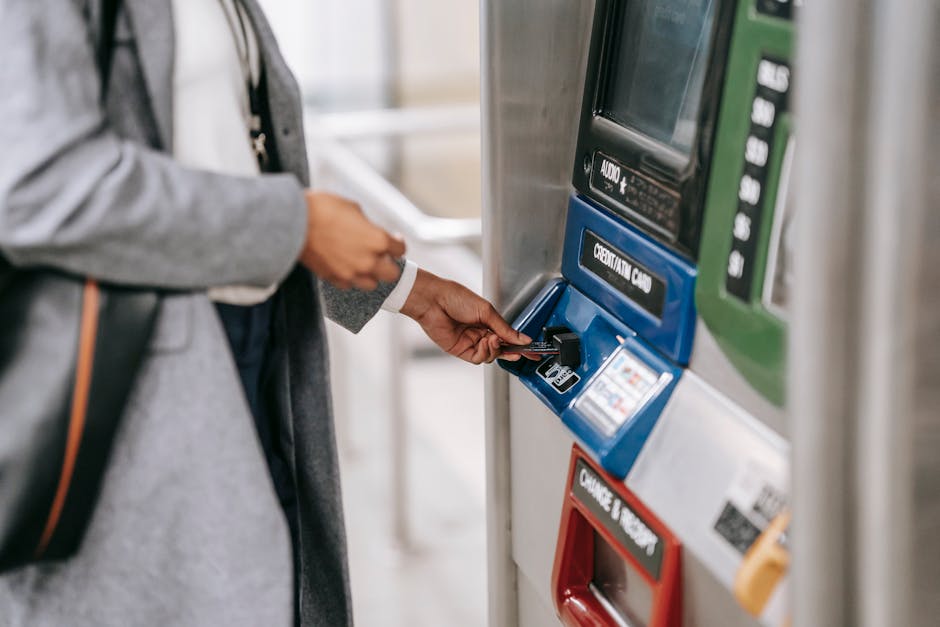Modernising Leeds’ Public Transport Through Api Integration
In today’s fast-paced world, efficiency and convenience are paramount when it comes to public transportation. As the saying goes, ‘time is money.’ And in the bustling city of Leeds, there is a pressing need for modernisation in its public transport system.
One solution that holds great promise is the integration of Application Programing Interfaces (APIs). API integration refers to the seamless connexion between different software systems, allowing them to communicate and share data in real-time. By incorporating APIs into Leeds’ public transport infrastructure, numerous benefits can be realised.
Commuters will experience enhanced efficiency and convenience through accurate real-time updates on bus and train schedules, as well as route optimisation based on traffic conditions. However, implementing API integration in such a complex system does not come without challenges. Ensuring compatibility between various platforms and maintaining data security are just some hurdles that need to be overcome.
Nevertheless, by leading the way in public transport modernisation through API integration, Leeds has the potential to become a model for other cities seeking efficient and convenient transportation solutions.
Key Takeaways
- Leeds’ public transport system needs modernisation for efficiency and convenience.
- API integration can provide real-time data updates on routes, schedules, and delays for passengers.
- APIs enable seamless connexions between different transportation services and can be used to create personalised travel apps.
- API integration improves connectivity and provides comprehensive travel information for improved journey planning.
The Need for Modernisation in Leeds’ Public Transport System

You need to modernise Leeds’ public transport system in order to improve efficiency and meet the demands of a growing population. The current infrastructure is outdated and unable to accommodate the increasing number of commuters. Congestion has become a major issue, causing delays and frustration for passengers. It’s clear that something needs to be done.
Improving infrastructure is crucial for a more efficient public transport system. By investing in new roads, bridges, and tunnels, you can create additional routes and alleviate congestion on existing ones. This will not only reduce travel times but also enhance the overall experience for commuters.
Additionally, upgrading bus stops and train stations with modern amenities will make public transport more accessible and convenient.
Reducing congestion is another key aspect of modernising Leeds’ public transport system. With more people relying on cars, roadways have become overcrowded during peak hours. Implementing measures such as carpool lanes or encouraging alternative modes of transportation like cycling can help ease traffic congestion significantly.
To achieve these goals, it’s essential to understand application programing interfaces (APIs). APIs allow different software systems to communicate with each other seamlessly. By integrating APIs into your public transport system, you can gather real-time data on passenger flow, vehicle locations, and traffic conditions. This information can then be used to optimise routes, adjust schedules accordingly, and provide accurate updates to passengers.
Modernising Leeds’ public transport system is imperative for improving efficiency and reducing congestion. By investing in infrastructure upgrades and leveraging APIs for data-driven decision-making, you can create a more reliable and convenient commuting experience for the city’s residents.
Understanding Application Programing Interfaces (APIs)

Discover how APIs can revolutionise your travel experience in Leeds by seamlessly connecting different services and providing real-time information. With API integration techniques, the benefits of the API economy are within reach for public transportation systems. Here are five reasons why APIs can transform your journey:
-
Real-time updates: APIs enable instant access to accurate and up-to-date information on routes, schedules, and delays. Say goodby to waiting at bus stops unsure of when your ride will arrive.
-
Seamless connexions: APIs allow different transportation services to communicate with each other, enabling smoother transfers between buses, trains, trams, and even rideshares. No more missed connexions or confusion about which mode of transport to take.
-
Personalised experiences: APIs empower developers to create innovative travel apps that cater to individual preferences. From personalised route recommendations to customised notifications based on your location, the possibilities are endless.
-
Enhanced accessibility: APIs make it easier for individuals with disabilities or special needs to navigate public transportation systems. By integrating accessible features into apps using APIs, everyone can enjoy a more inclusive travel experience.
-
Improved efficiency: APIs streamline operations by automating processes like ticketing and payment systems. This reduces manual errors and speeds up transactions, resulting in a more efficient public transport network.
By embracing API integration in public transportation, Leeds can unlock these benefits and provide residents and visitors with a modernised travel experience. Find out how these advantages translate into tangible improvements in the subsequent section about the benefits of API integration in public transportation without missing a beat.
Benefits of API Integration in Public Transportation

With API integration, public transportation becomes a well-oiled machine, seamlessly connecting services like puzzle pieces to create a travel experience as smooth as silk. The benefits of API integration in public transportation are numerous, but two key advantages stand out: improving connectivity and providing real-time updates.
Improving connectivity is crucial for an efficient and convenient public transportation system. By integrating APIs, different modes of transport such as buses, trains, and trams can communicate with each other in real-time. This means that passengers can easily plan their journeys using multiple modes of transport without the hassle of checking separate schedules or waiting for connexions. The integration of APIs allows for a seamless transfer from one mode of transport to another, reducing travel time and increasing convenience.
Real-time updates are essential in ensuring that passengers have accurate information about their journeys. With API integration, public transportation systems can provide real-time data on arrival times, delays, and disruptions. Passengers can access this information through mobile apps or websites, allowing them to make informed decisions about their travel plans. Real-time updates also help reduce uncertainty and anxiety by providing timely information about any changes or issues that may affect the journey.
To better understand the benefits of API integration in public transportation, let’s take a look at the following table:
| Benefits | Description |
|---|---|
| Improved Connectivity | Seamless connexion between different modes of transport |
| Real-Time Updates | Accurate information on arrival times, delays, and disruptions |
With these advantages in mind, it is clear that API integration plays a vital role in enhancing efficiency and convenience for commuters. By improving connectivity and providing real-time updates, public transportation systems become more reliable and user-friendly — making commuting easier than ever before.
Next up: ‘Enhancing Efficiency and Convenience for Commuters.’
Enhancing Efficiency and Convenience for Commuters

Enhancing efficiency and convenience for commuters is the key to a seamless and enjoyable transportation experience. By integrating APIs into public transport systems, improvements can be made that directly benefit the user experience.
-
Real-time updates: With API integration, commuters can receive real-time updates on bus and train schedules, delays, and changes in routes. This allows them to plan their journeys more effectively and avoid unnecessary waiting times. For example, if there’s a delay in a particular bus service, commuters will be notified immediately so they can make alternative arrangements or adjust their plans accordingly.
-
Improved journey planning: APIs can provide commuters with access to comprehensive travel information all in one place. This includes not just public transport schedules but also information about traffic conditions, weather forecasts, and even available parking spaces. Armed with this data-driven knowledge, commuters can make informed decisions about the best route to take and optimise their travel time.
-
Seamless ticketing: Another benefit of API integration is the ability to seamlessly purchase tickets through mobile applications or smart cards. Commuters don’t need to queue up at ticket counters or fumble for loose change anymore. They can simply tap their smartphones or cards at designated points and board the vehicle hassle-free.
Incorporating these improvements into public transport systems ensures that commuters have a more efficient and convenient experience when travelling around Leeds. However, implementing API integration does come with its own set of challenges and solutions that need to be addressed. (Transition sentence leading into the next section)
Potential Challenges and Solutions in Implementing API Integration

Are you ready to tackle the potential challenges and find solutions for implementing API integration in order to enhance efficiency and convenience for commuters? As we delve into this topic, it’s crucial to address two key concerns: data security and data privacy.
When integrating APIs into public transport systems, there is a need to ensure that sensitive information remains protected from unauthorised access or breaches. This can be achieved through robust encryption techniques and strict access control measures.
Data security should be a top priority when modernising public transport networks through API integration. By implementing strong encryption protocols, such as Transport Layer Security (TLS), we can safeguard data transmitted between different systems. Additionally, establishing stringent authentication mechanisms will prevent unauthorised entities from gaining access to sensitive information.
Similarly, protecting commuters’ data privacy is of utmost importance. Implementing anonymization techniques can help ensure that personally identifiable information (PII) is not exposed during the integration process. By stripping away any identifying details from the datasets used by APIs, we can maintain individuals’ privacy while still benefiting from the valuable insights derived from the collected data.
To overcome these challenges, collaboration between transport authorities, technology providers, and cybersecurity experts is essential. Thorough risk assessments should be conducted before implementing any API integration initiatives to identify potential vulnerabilities and develop appropriate mitigation strategies.
By addressing these challenges head-on and prioritising data security and privacy in API integration efforts, Leeds has the opportunity to become a model city for other urban centres seeking to modernise their public transport systems. With careful planning and implementation of best practises, Leeds can set an example for other cities looking to enhance efficiency and convenience for their commuters without compromising on important aspects like data security and privacy.
Transitioning into the subsequent section about ‘Leeds as a model for other cities in public transport modernisation,’ let’s explore how this transformation could have far-reaching effects beyond just one city’s transportation system.
Leeds as a Model for Other Cities in Public Transport Modernisation

Leeds has the potential to revolutionise urban transportation systems and inspire other cities to follow suit. The success of Leeds in modernising its public transport system serves as a shining example for other cities looking to improve their own transportation infrastructure. By implementing innovative strategies and embracing technology, Leeds has demonstrated that it’s possible to create a more efficient and sustainable transport network.
Lessons learnt from Leeds’ public transport modernisation include:
-
Integration of APIs: Leeds has successfully integrated various APIs into its transportation system, allowing for real-time data sharing between different modes of transport. This enables passengers to plan their journeys more effectively and minimises disruptions caused by delays or changes in schedules.
-
Seamless ticketing solutions: One key aspect of Leeds’ success lies in its seamless ticketing solutions. By introducing contactless payment methods and mobile ticketing apps, the city has made it easier for passengers to pay for their journeys, reducing queues at ticket booths and improving overall efficiency.
-
Multi-modal connectivity: Leeds has prioritised creating a well-connected transport network that seamlessly integrates different modes of transport such as buses, trains, trams, and cycling infrastructure. This approach encourages people to use public transport instead of private cars, reducing congestion and air pollution.
-
Data-driven decision making: A crucial element of Leeds’ modernisation efforts is the use of data analytics to inform decision-making processes. By analysing passenger trends and patterns, authorities can identify areas that require improvement or expansion, ensuring resources are allocated efficiently.
-
Collaboration with stakeholders: Leeds’ success can be attributed in part to effective collaboration with various stakeholders, including local government bodies, transport operators, and technology providers. Through partnerships and open communication channels, they’ve been able to work together towards a shared goal of enhancing the city’s transportation system.
Leeds serves as a model city for others seeking inspiration in modernising their public transport networks. Its success can be attributed to factors such as API integration, seamless ticketing solutions, multi-modal connectivity, data-driven decision making, and collaboration with stakeholders. By adopting similar strategies, other cities can strive towards creating more efficient, sustainable, and passenger-centric transportation systems.
Contact us to discuss our services now!
